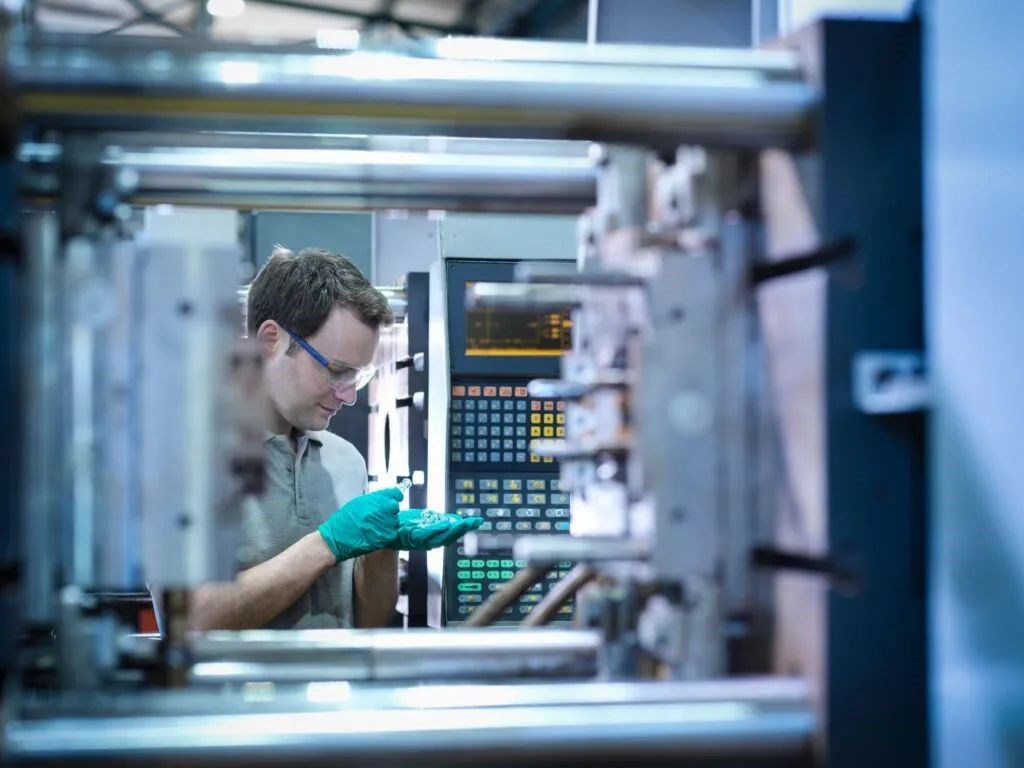Plastic Injection Moulding
Published date: 23 February 2022

Plastic injection moulding is a manufacturing process for producing parts in large volumes. It works by injecting molten plastic into a mould. Injection moulding allows for mass production of items in a short time. It is also a cost-effective process. Most of the expenses are upfront.
Injection moulding can use a wide range of plastics. These can be placed into two groups: thermosets and thermoplastics. Thermoplastics are prevalent, due to their specific properties. They are versatile materials and can be recycled. They also soften and flow easily when heated.
How does plastic injection moulding work?
Injection moulding requires a three-part machine. The parts are: injection unit, mould and clamp. Most moulds are made from aluminium or steel. Each type has its benefits and downsides. Aluminium, while cheap, is prone to wear and damage. Steel moulds are durable, but also expensive. Moulds can have single or multiple cavities.
Plastic injection moulding is a process in several stages:
- A barrel is filled with resin pellets.
- The resin is heated and mixed inside the barrel.
- A plunger injects the molten resin inside the mould cavity.
- The plastic cools and solidifies in the desired shape.
When the plastic is fully hardened, the mould opens. Ejector pins release the part into a loading area.
What are the advantages of plastic injection moulding?
- Mass production: The main advantage of the process. Injection moulding allows for the production of a large number of parts in a short time. Once the initial costs have been covered, the price per part is low. The price also tends to drop as more parts are produced.
- Reduction of waste: Injection moulding produces low waste rates. Other manufacturing processes cut away much higher percentages of an original plastic block. Also, thermoplastics residues can be recycled. This further reduces waste.
- Consistency: Injection moulding produces many identical parts. This leads to increased reliability and uniformity.
What are the disadvantages of plastic injection moulding?
- Upfront costs: Initial costs of moulding tend to be high. Costs correlate with design, testing, and tooling requirements. Detailed parts will be more expensive to produce than simple ones.
The prototyping phase is extremely important. An initial production round is required before production starts. This represents an additional expense. - Difficult to adjust: Moulds are made of metal. This can make them difficult to change. If a manufacturer needs larger or smaller parts, they have to rework the moulds. The moulds might need to be scrapped altogether.
- Not ideal for producing large single parts: Injection mould machines have size limitations. Large items need to be created as multiple parts.
Conro Electronics is a leading supplier of materials and tools in the electronic manufacturing industry.
We’ll show you how to improve product reliability while increasing performance and lowering costs. Our team of technical support specialists will provide your company with dependable global supply, unrivalled efficiency, and superior technical support.
Feel free to contact us on 0208 953 1211 or send us an email to info@conro.com




Comments
There are currently no comments, be the first to comment.